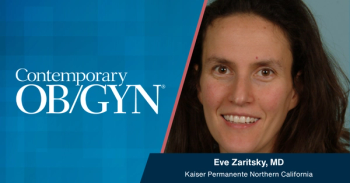
Opinion for benchmarking basic skills of laparoscopic surgery for residents
From the 34th Annual Meeting - Chicago, Illinois - November 2005
Lisolette Mettler, MD PhD: I would like to introduce a very unique person, a long time professor of Obstetrics and Gynecology of Stanford University, who has chosen for his, let’s say, third life, after long time being a Chairman, the topic of education. I would like to ask whether Professor Heinrichs who I met only last year unfortunately, to speak on his opinion for benchmarking basic skills of laparoscopic surgery for young doctors, residents and young trainees in medical fields.
William Leroy Heinrichs, MD, PhD: Thank you, Lilo. Yes, this is an important area that we are discussing because many people know about learning and teaching basic skills, but we have not had very good methods until now to be able to measure those skills, and keep the data for comparative purposes. So, we have new technologies nowadays that allow us to not only allow people to practice, but for them to follow their curves to understand how they themselves are learning. And, if a residency program director has the responsibility of assuring that they are well trained, then of course they have access to the data and can advise the student, the resident, of how much time they need to spend.
Now, as far as the benchmarks, we have not had any good benchmarks until very recently. We have collected in the past two years, under the auspices of the AAGL and the SLS, data that describes from over 100 surgeons who come to the meeting, how they do on surgical simulators. How do they perform? So, we have this data and I am presenting some of those in the meeting today. Going forward we have from a number of expert surgeons their contributed data and have been analyzing it to see what the experienced surgeons can do with simulators, believing that they will do better than novices with the same equipment. These benchmarks will be thought of in the future as standards to which every student resident will aspire in their training program. So a residency program director will be able to say at year one, one should not expect to do 25% as well as an experienced surgeon. By the end of the residency, we hope that everyone will aspire to proficiency levels at a very high level. We begin now to quantitate the experiences with the currently available equipment that will enable us to set these benchmarks. That is the kind of research that is occupying my thinking these days.
Lisolette Mettler, MD PhD: Do you think that at these meetings like the AAGL we are taking enough time, that there is enough emphasis, put on these training modules?
William Leroy Heinrichs, MD, PhD: We see in the exhibit hall some of the simulators being used for a variety of purposes and we are beginning to hear reports in meetings. You yourself have reported previously in meetings of your experience, and similarly we present data. So, there are scientific reports, and they are in the exhibit hall, and there are starting to be some commercial exhibits of simulator technologies.
Many times companies such as Ethicon has taken a simulator and used it to demonstrate their equipment. Simulators are used in many ways. I am hopeful and trying to promote the use of simulators as a learning technology that every person who learns surgery must use to gain skills, and also on the other hand, for experienced surgeons to maintain skills. So there are dual purposes for the use of simulators.
Lisolette Mettler, MD PhD: Thank you very much for your opinion.
William Leroy Heinrichs, MD, PhD: Thank you, you’re welcome.
Newsletter
Get the latest clinical updates, case studies, and expert commentary in obstetric and gynecologic care. Sign up now to stay informed.




















